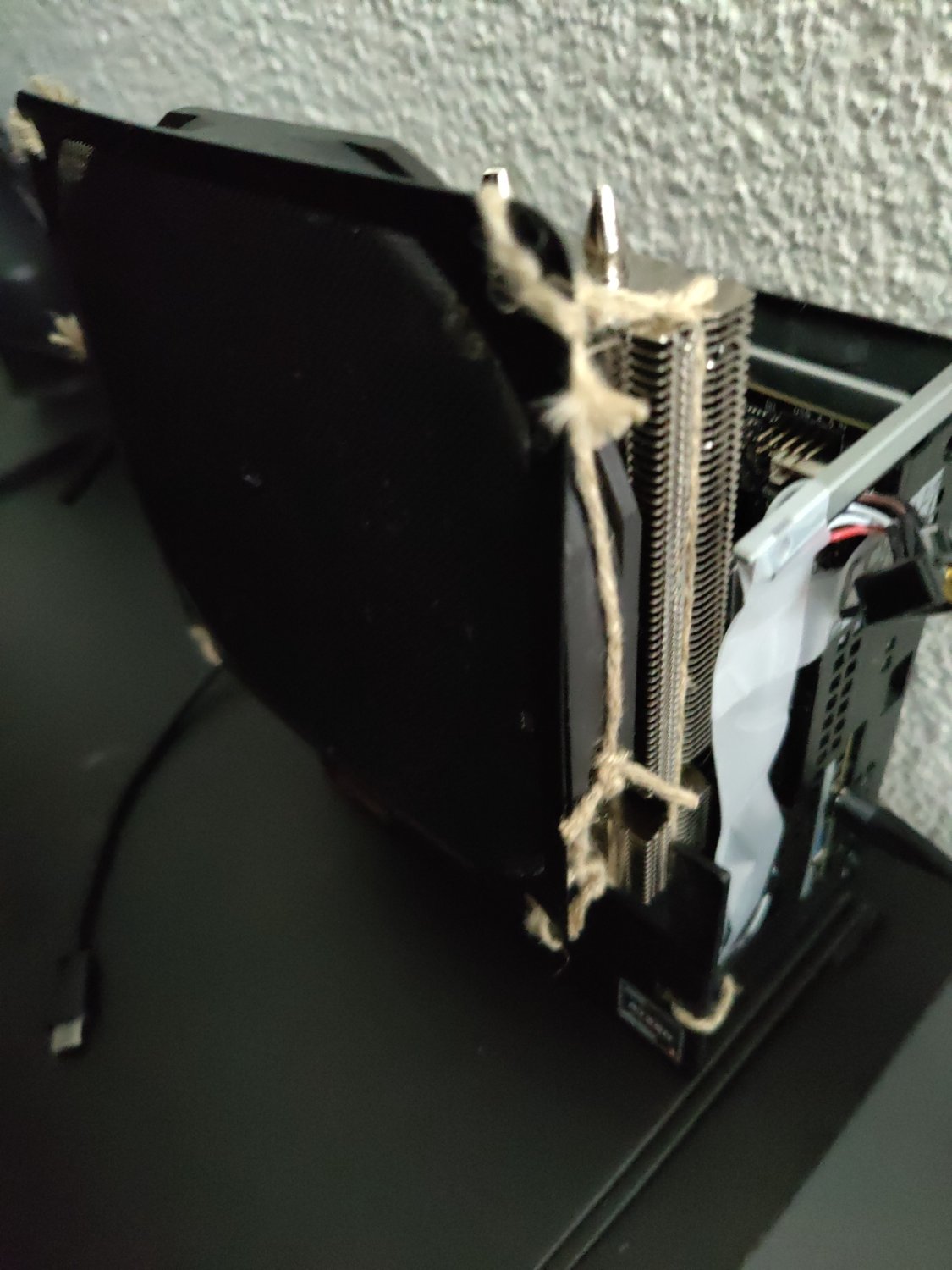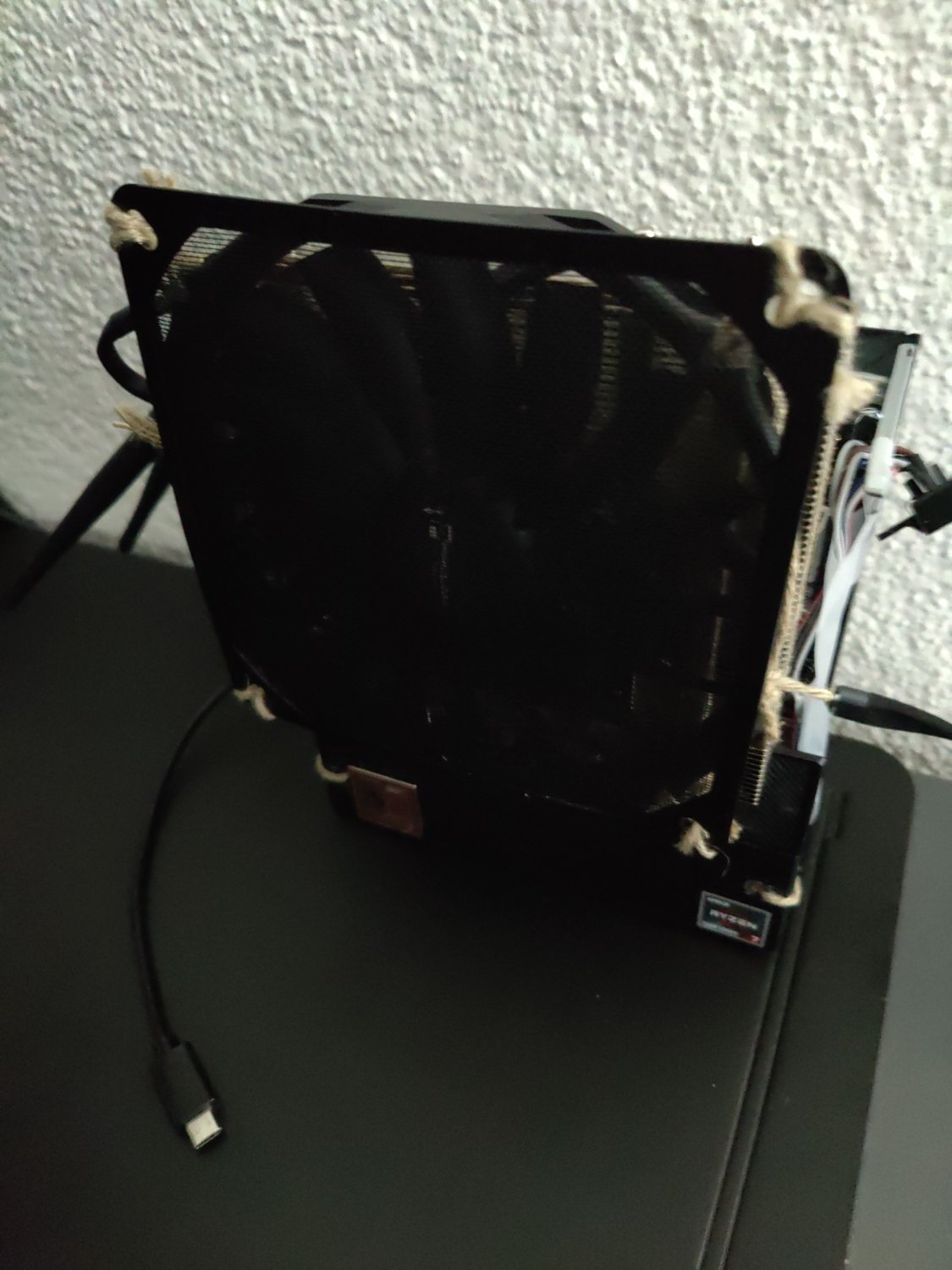I actually did need to take a hacksaw to a Dell case when the PSU died, because they used a proprietary form factor. It was just removing some of the back panel and it worked fine.
Once upon a time I think they also had custom pinouts on the ATX connector, so just replacing your PSU with a standard one would fry your mobo
They did, I was about to say the same thing! I had to buy an adapter to make it work right. This was like mid to late 2000’s. I work in IT for a company and didn’t want to spend money on a new PC yet so I snagged one from work that was no longer used. It got the job done, but yeah it was crazy to see what they did to make it so you couldn’t swap or change some things inside.
Fuckin pricks turning the goddamn cpus 45° so no cooler would ever fit… grrr
Yeeeep. I did this. Very disheartening after spending the time with a Dremel to modify the back panel enough for it to fit.
What a bunch of assholes.
Reminds me of when I made a pc as a media center for my roommates out of old spare pc parts and the box that their xbox360 came in.
Had to turn it on by using a paper clip to short the right two pins, lol.
to short the right two pins
That’s the core principle of how switches work. You have done everything right.
Legit badass. “Hotwire the PC so we can watch a movie!”
I test-“built” my first gaming pc with all the parts laying on my bed.
The only computer parts store within cycling distance just put returned parts back on the shelf, so there was about an 80% chance at least one part you bought was dead out of the box.Later I remembered that that’s possible, and built a gaming rig with all parts mounted openly on the wall behind my desk.
You know, you could have run down to the electronics store and bought an actual button for those pins. Still, that sounds like a fun build.
I have enough money for an angle grinder and a new used graphics card. But not a fancy new case.
With prebuilds like this a lot of times you can’t just change the case without also changing the motherboard. Also they could have an angle grinder just laying around. They may even have done it on purpose for the lulz.
I actually just upgraded my Dell Optiplex 990 SFF to a new full ATX case and had to get a new motherboard. Dell does some funky stuff to their motherboard to get it to fit into their custom cases. For instance the CPU cooler clipped into the case through the motherboard This was one of the ways the motherboard was secured into the case. The other mount points were entirely non-standard so no other case would fit. I did consider making some modifications to the case with a hacksaw before deciding to just get a new case and motherboard. The new Motherboard was pretty cheap because I was using a 4th-gen intel i3. Not great specs but good enough for a homebrew NAS.
Yes, from experience, yes. But I used a pair of tin snips.
If it’s stupid and it works…
“Tech hack”
So it isn’t stupid anymore, but they could just find a random full size pc case somewhere and use it instead of this.
It’s an OEM motherboard and it may not be a normal standard. The PSU isn’t normal either so it wouldn’t fit most *ATX cases. Plus, free is free.
OEM mobos suck. Boards from this era of Optiplex are pretty standard, but newer ones have motherboards that go all the way from one side of the chassis to the other, and mount the power button and front panel I/O on the mobo. I don’t even know if they have internal USB headers.
I thought dells aren’t as shitty as the competition, as I have a great experience with a Latitude 5290. I guess I was wrong.
They’re not shitty. HP, Lenovo do the same shit - proprietary motherboards, limited feature sets, and minimal upgrade paths are typical of OEMs… It’s also why a lot of people recommend building to anyone.



The Ryzen 7 5700G can get hot.
I call it DeskMiniMax.
Slightly related: You remember back when cases would have little grommets for water cooling lines because the reservoir and/or the tank would be external to the PC case?
Why even bother putting the side cover back on? I left mine open for years.
maybe pet hair? dust? maybe they get laid?
You’re talking about three different things, right? … right?

I toucha da
fishcat.
hey if you can sexually satisfy dust and cat hair, you should consider starting an onlyfans. while the human brain often confuses sneezing for orgasms, it’s only partial credit.
They’re a pc gamer, they sure as shit ain’t getting laid.
Put energy into women, or put energy into Helldivers.
I’ve been through enough trauma to know that Helldivers is way healthier
Probably sound mitigation
Fuckin’ eh. My power supply is slung out the side to make room for a video card, with the case panel resting askew on top all perched on a milk crate. Like a slasher flick autopsy.
I did this, except in a cardboard box, plugged into an outlet with no ground, and using it to mine cryptocurrency. Somehow I didn’t burn down my apartment.
This looks like a Basic Bitch® office workstation. Surely you could put the same graphics card in a price-comparable gaming rig without having to resort to this…
A basic bitch office workstation is like $20 at a garage sale to $150 from a refurb shop with a Windows license. Cutting the case is twenty minutes for template and cut.
Nothing fiscally competes with these.
The hole in the side is a speed-hole. It makes the computer go faster.
Imagine if the graphics card’s PCB component legs, as well as the soldering, accidentally touches the metal case if something or someone abruptly moves the PC case while it’s turned on… With the case directly grounded/going to neutral or, even worse, plugged in US power outlets with reversed pins (so 110 volts now runs through the metal case, ready to find circuit with the secondary voltages running through the graphics card’s PBC trails).
Best case scenario is the user’s fingers discharging accumulated amounts of static energy when they touch the case while also touching some card’s circuitry.
plugged in US power outlets with reversed pins (so 110 volts now runs through the metal case
PC power supplies don’t work the way you think they do.
I think OC has a case of the Kruger peak…
ATX power supplies are literally some of the safest power supplies to exist, and a GFCI breaker would prevent this scenario from even happening IMO lol
Where exactly do you think the middle pin from power outlet goes?
If not to ground the metallic husk, then the third pin is useless there. It’s there with a purpose: it’s meant to ground, generally (present at the best of electrical house infrastructures) going all the way to a buried copper rod that creates a short circuit with the ground present when someone is touching the metallic husk. Also, in US, IIRC (I’m from Brazil so I don’t know the US electric system so well, although old Brazilian outlets are inspired by US outlets) they have GFCI (Ground fault circuit interrupter): if GFCI detects flowing energy at the ground, the outlet shuts off, protecting people from electrical shock.
However, on many houses, neither GFCI nor proper ground is present. Some houses (it’s common in Brazil with older outlets inspired by the US outlet) route ground wire to the “neutral”, be it on the outlet, be it on a DIY extension cord. The latter will allow for neutral to be plugged into phase, so ground will be phase as well. From there, I guess I don’t need to detail what happens if someone touches a phased ground. Zap!
In Brazil we have a different kind of outlet, one with a specific shape (inspired by the Swiss power outlet) that won’t let us plug reversely. With these outlets, phase goes to phase, ground to ground and neutral to neutral. Old houses still have the US-based outlet, tho.
Modern US plugs have a wide blade for “neutral” or “return path” and a narrow blade for “live” or “hot” (plus the round ground pin). In my part of the US, we only have GFCI near water (restrooms and kitchen) but always proper circuit breakers and ground to water pipes where the mains AC enters. There still exist many 2-prong appliances, but those will never have the case connected electrically!
If you don’t have a proper earth ground, then tying anything together is bad news. You could have one appliance shorting out and damaging others on the same circuit, or burning your wires in the wall. Regarding the PC switch-mode supply, AC in goes to a transformer which doesn’t care if hot and neutral are swapped.
Sorry if I sounded like a jerk. I’ve been working on PCs and appliances for decades and only once ever had an energized case; not a PC. Touching two machines each plugged into a seperate circuit, got a metallic taste in my mouth, pulled out the meter and measured ~80VAC! Verified my vending machine and outlet were wired correctly and recommended getting their popcorn machine and outlet checked out.
Judge not…
This is the dude I’d turn down any 1v1 Starcraft matches against at the lan party.
PSU popping noises and smoke…
although a joke, usually oem psus are fairly high efficiency, just low wattage. however the image uses a gpu without a 6/8/12 pin connector, so its highly unlikely the up to 75W load would kill the system when the psus are usually rated for 200, and the cpu usually only uses 1/4 of that
Noice.
I kind of think more designs should be like that. Let the GPU breathe cold air from outside the case.
There were a lot of experiments with wind tunnels and such back in the day. In the end, the difference wasn’t significant enough to justify the R&D.
??? You don’t wind tunnel test for thermals. That’s for aerodynamics. It’s well known that a GPU outside of a case runs cooler than inside.
It’s why cases are tested by putting a GPU inside and reporting the thermals at idle and load. It is significant.
I mean physical tunnels from the front or side of the case directed at the cooler heatsink to direct outside air directly onto the heatsink. There were tons of different designs for that concept back in the day, but you don’t really see it very often now.
Maybe they didn’t mean wind tunnel, but that they lit a cigarette and checked the airflow 🤷
Winning. So much wow!








